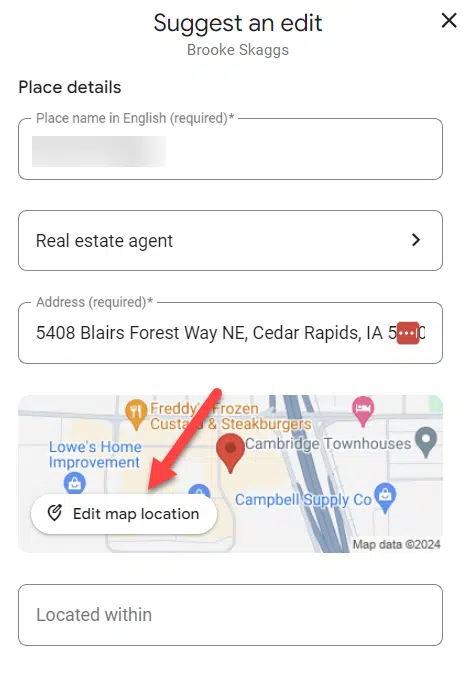Google shook the search engine optimization (SEO) world with a pair of algorithm updates this week — the March 2024 Core and Spam Updates. Launched within minutes of each other, the two updates are likely to pack a punch on low-quality, automated content and sites that exist purely for the sake of harnessing the power of organic search.
Throughout the month, expect fluctuations in rankings as Google updates the various algorithmic systems that are part of its overall Core Updates. Chris Nelson from the Search Quality team explained it this way: “The March 2024 core update is a more complex update than our usual core updates, involving changes to multiple core systems. … It’s likely there will be more fluctuations in rankings than with a regular core update, as different systems get fully updated and reinforce each other.”
Essentially, the various systems will update throughout the three- to four-week duration of this algorithm update, so it’s possible to see changes in your individual site’s rankings at multiple points along the process rather than everyone seeing one big bump or dip at the same time. This is different from the typical 2-week algorithm update. It is reportedly much more complex and will take longer to roll out.
What Algorithm Updates Were Released?
Historically speaking, Core Updates and Spam Updates have been happening for years, with varying degrees of severity.
Google’s Core Updates, originally called Broad Core Updates, are meant to reward sites that offer outstanding content written with people in mind. Basically, a site that does the right things for its audience and its business rather than focusing on SEO is meant to improve in rankings.
On the flip side, Spam Updates are meant to penalize bad actors whose SEO strategies break Google’s spam policies. Activities like creating unnatural link profiles, auto-generating content that’s not valuable to visitors, and focusing on small keyword variances to generate multiple pages of content can land you on the wrong side of a Spam Update, with decreased or removed search results as a consequence.
What Makes These Algorithm Updates Different?
Google Search representatives have been alluding to big changes in search result quality coming, mostly when reacting to complaints about search quality from the SEO community. Well, it seems likely that this update is at least part of that change because the director of product at Google Search, Elizabeth Tucker, said that the combination of recent efforts and this update will “collectively reduce low-quality, unoriginal content in search results by 40%.”
Now you have to pay attention to her phrasing — she’s not saying that 40% of the search results will change. That would indeed be huge. But a 40% reduction in low-quality results is a big change, nonetheless.
In addition, this Core Update rolls the powerful Helpful Content Update into the Core Updates on this one and in the future. The Helpful Content Update has shown itself to be a powerful algorithmic force in the past, and its separation from Core Updates has been helpful in determining what sort of algorithmic impact a site was facing. At the same time, Core Updates have always had a content quality component to them as well.
Speaking of content quality, Google also updated its search quality raters guidelines to address factual inaccuracies, another nod to ensuring that content meets high-quality standards and is factually correct. This, paired with the focus on helpful content and the addition of a scaled content abuse addition to the spam guidelines, feels like Google is speaking loud and clear to sites that post crummy, automated content as a way to game the search algorithms.
Lastly, the stacking of the Spam Update on top of the Core Update leads to further murkiness in the water. Sites that have been dancing on the line between beneficial, white-hat strategies and into the grey area may find themselves unsure whether their easy-acquisition but low-quality link building put them over the edge or their questionable content quality.
The scaled content component, in particular, feels like a double-edged sword for sites that have been generating high volumes of low-quality content for SEO purposes. In addition to the Helpful Content system rewarding audience-first, helpful content at the expense of sites that do not, the scaled content abuse aspect of the Spam Update actively punishes sites that abuse scaled content.
Which Algorithm Update Hit You?
The multi-update nature of this one makes that difficult to tease out, but you will likely have an idea if you’ve been doing something that runs afoul of Google’s spam policies.
Pay special attention if you’ve been doing any of these things that Google just added to its spam policies:
- Scaled content abuse: This is the polar opposite of audience-focused, helpful content. Whether human- or AI-generated, scaled content refers to the practice of generating volumes of low-quality content in hopes that some of it will stick and draw in organic search traffic.
- Expired domain abuse: Purchasing a previously inhabited domain for the purpose of benefitting from the domain’s link authority, typically paired with off-topic or low-quality content.
- Site reputation abuse: Also known as parasite SEO, this comes into play when third-party publishers are allowed to post content on a site with little or no oversight from the site owners.
If you’ve been doing these things — or others that violate Google’s spam policies — then stop. If Google hasn’t figured out you’re doing it yet, it’s just a matter of time.
In some cases, Google is sending out manual actions — notifications via Google Search Console that a site has been penalized — alongside the algorithm update and in tandem with its spam policy updates. But, in most cases, you won’t receive any warning or confirmation that your site has been targeted.
If you haven’t been doing any of those things, and you honestly haven’t been violating Google’s other spam policies, then it’s probably the Core Update. If that’s the case, you’re probably looking at a people-first content quality or user experience challenge, broadly speaking.
Recovering from the Core Update takes determining which content caused the issue and reworking it to be more helpful, more unique, more valuable, and more audience-focused. If it’s the Helpful Content System specifically that caused the issue, it can take months to recover after you’ve made the updates because Google needs to see — algorithmically — that the changes you’ve made are there to stay.
Moving Forward, an Opinion
This is the direction Google is heading in, not just with one algorithm update but with the progression of updates it has made over the years. Each one is becoming more and more focused on high-value, helpful, quality content and the user’s best interest.
Whether one believes Google is doing a great job at determining these things algorithmically is irrelevant. They will only continue to make progress in this direction, and the sooner you jump on board with doing the right things right, as defined by the one who makes the rules, the better your long-term results will be.
For a deeper analysis of either the Core Update or the Spam Update, click over to Search Engine Roundtable.




